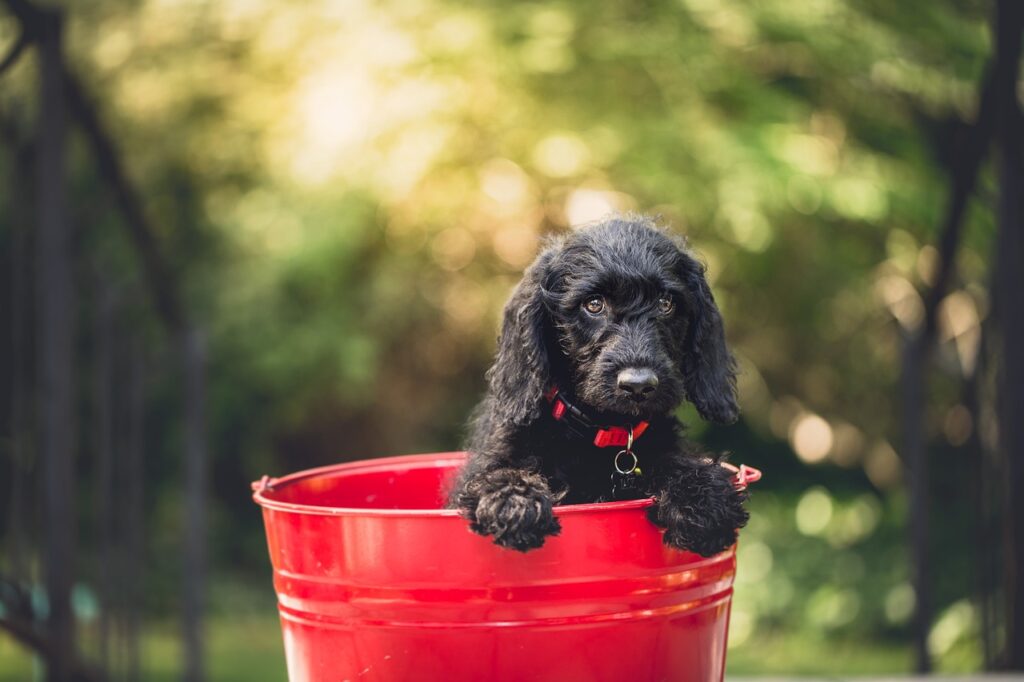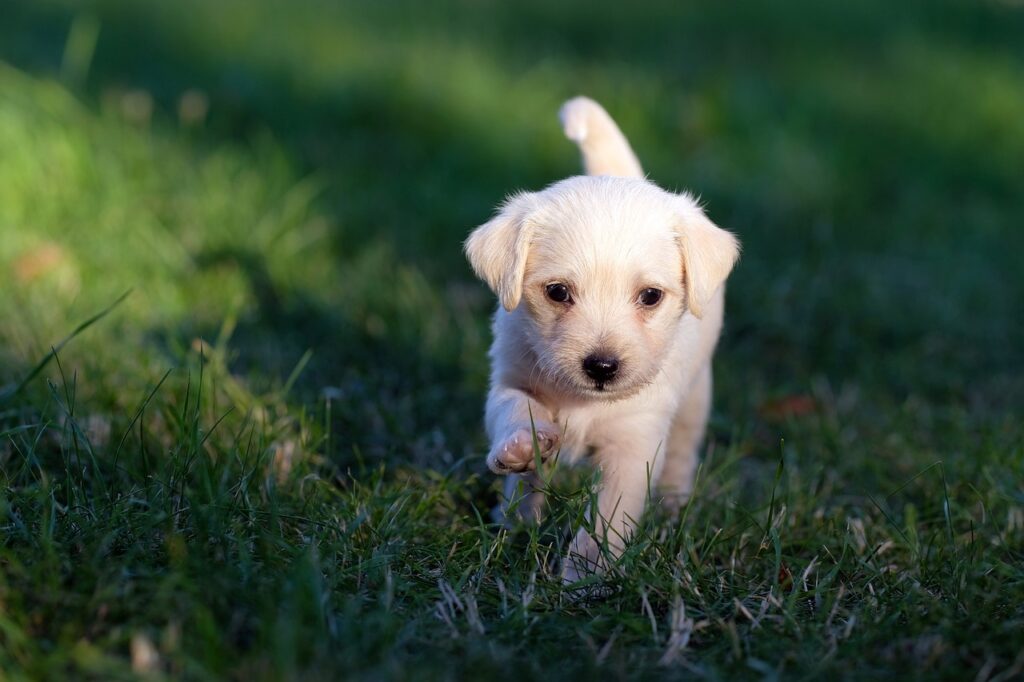Bringing home a new puppy is an exciting time, filled with cuddles, playtime, and endless cuteness. However, along with the joys of puppyhood, comes the task of potty training.
It’s a crucial aspect of raising a well-behaved and happy dog, but it can also be a challenging endeavor. But fear not, fellow dog lover!
In this article, we’ll delve into the world of potty training a puppy, covering the essential equipment you’ll need, the best techniques to use, and some witty tips to make the process enjoyable for both you and your pup.
Table of Contents
Potty Training Equipment: The Must-Haves for Success
Before you embark on your potty training journey, it’s important to gather the right tools for the job.
Here are some essential potty training equipment that you’ll need:
- Puppy Pads: Puppy pads are absorbent pads designed to be placed on the floor to provide a designated spot for your puppy to eliminate. They are especially useful for indoor training, especially during the early stages when your pup is still developing bladder control. Look for high-quality, leak-proof pads that are large enough to cover the area your pup will use.
- Crate or Playpen: A crate or playpen can be a valuable tool in potty training. Dogs naturally avoid soiling their sleeping area, and using a crate or playpen can help teach your pup to hold their bladder and bowels until they are taken outside. Choose a crate or playpen that is spacious enough for your pup to stand, lie down, and turn around comfortably, but not too big that they can eliminate in one corner and sleep in another.
- Treats and Rewards: Positive reinforcement is a key component of effective potty training. Stock up on tasty treats that your pup loves, as well as other rewards such as praise, playtime, or a favorite toy. These incentives can help motivate your pup to learn and reinforce good potty habits.
- Cleaning Supplies: Accidents are inevitable during potty training, so be prepared with appropriate cleaning supplies. Look for enzymatic cleaners specifically designed for pet messes to thoroughly eliminate odors and discourage repeat accidents. Avoid using cleaners with ammonia or bleach, as these can actually attract your pup to eliminate in the same spot.
The Best Potty Training Technique: Consistency and Patience
Now that you have the right equipment, let’s dive into the best potty training technique to set your pup up for success:

- Establish a Routine: Consistency is key in potty training. Establish a regular feeding schedule for your pup, and take them outside to their designated potty spot at the same times each day, such as after meals, naps, and playtime. Be patient and wait for your pup to eliminate before bringing them back inside.
- Supervise and Prevent Accidents: Keep a close eye on your pup when they are indoors and intervene if you catch them sniffing or circling, as these are signs that they may need to eliminate. If you can’t supervise your pup, confine them to a crate or playpen to prevent accidents. When you take your pup outside, use a cue word or phrase, such as “Go potty,” to encourage them to eliminate on command.
- Use Positive Reinforcement: When your pup eliminates in their designated potty spot, immediately praise and reward them with treats and praise. This reinforces the good behavior and encourages them to repeat it. Avoid punishing or scolding your pup for accidents, as this can create fear or anxiety around potty training and hinder progress.
- Be Patient and Persistent: Potty training takes time and patience, so be prepared for some setbacks along the way. Remember that accidents are a normal part of the process, and it’s important to stay positive and consistent with your training. Don’t give up, and keep reinforcing good potty habits with rewards and praise.
- Gradually Transition to Outdoor Elimination: As your pup becomes more reliable with potty training, gradually transition from indoor puppy pads or a designated potty spot to outdoor elimination. Take your pup to the same spot in your yard each time, and use the same cue word or phrase to encourage them to eliminate. Be patient and consistent, and soon your pup will learn to associate the outdoor spot with potty time.
- Adjusting the Schedule: As your pup grows older and gains more bladder and bowel control, you can gradually adjust their potty schedule. You can extend the time between potty breaks, but be mindful of your pup’s age, breed, and size, as smaller dogs may need more frequent breaks. Always pay attention to your pup’s cues and adjust the schedule accordingly to prevent accidents.
Potty Training with a Witty Twist: Fun and Enjoyable Tips
Potty training can be a challenging task, but it doesn’t have to be all serious business. Inject some fun and enjoyment into the process with these witty tips:
- Create a Potty Training Playlist: Put together a fun and upbeat playlist of your favorite songs to play during potty breaks. Dancing and singing along can make the process more enjoyable for both you and your pup, and can even help relax them and encourage elimination.
- Celebrate Each Milestone: Every successful potty break is a reason to celebrate! Create a “Potty Party” where you and your pup do a little dance, give high-fives, or even throw a mini treat party. This positive reinforcement can help motivate your pup and make potty training a more enjoyable experience.
- Get Creative with Treats: Use a variety of treats to keep your pup motivated and excited about potty training. You can use different flavors, shapes, and sizes of treats to add some excitement and anticipation to the process. Just be mindful of the portion sizes and avoid overfeeding your pup during training.
- Use Humor to Lighten the Mood: Potty training can be messy, but it’s important to keep a sense of humor about it. Laugh off accidents, make funny comments, and keep the mood light and positive. Your pup will pick up on your positive energy and be more receptive to learning.
- Involve the Whole Family: Get the whole family involved in potty training. Assign specific tasks to each family member, such as taking your pup outside, cleaning up accidents, or rewarding good potty behavior. Not only will this lighten the load for you, but it will also create a sense of teamwork and bonding among family members.
Conclusion
In conclusion, potty training a puppy requires patience, consistency, and positive reinforcement. By using the right equipment, establishing a routine, and being patient and persistent, you can successfully potty train your pup and set them up for a lifetime of good potty habits.
Don’t forget to inject some fun and enjoyment into the process with witty tips and creative techniques. Soon enough, your pup will be proudly wagging their tail as they confidently eliminate in their designated potty spot, and you’ll be celebrating your potty training victory with a sense of accomplishment and a happy, well-trained pup by your side.
Happy potty training, and may the paw-sitive vibes be with you!


Dennis and Becca, have always shared a passion for man’s best friend. As dog enthusiasts, they put together articles that inform, engage, and captivate fellow dog lovers.